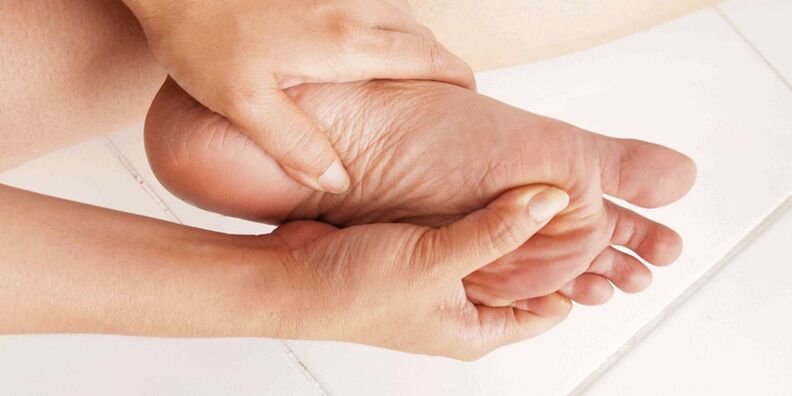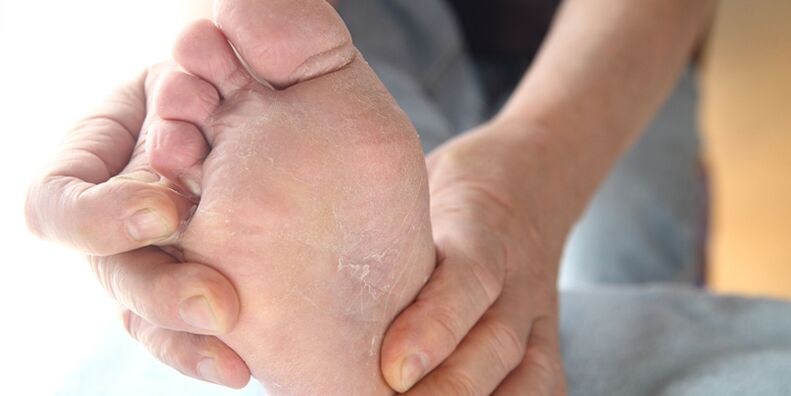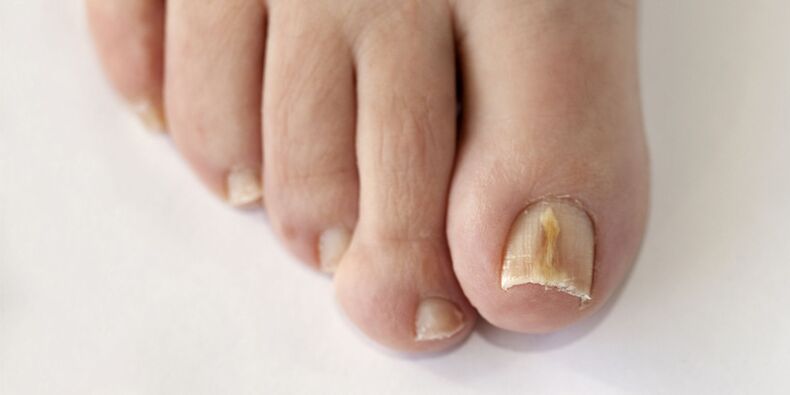
One of the most annoying, sudden and annoying illnesses is onychomycosis. Some treat it for years, others - just a few months. Why so? This is because there is one important rule: if the symptoms of nail fungus are detected in the early stages, the duration of your treatment will be greatly reduced.
Unfortunately, not everyone can get out immediately after an infection. Fungal spores "reside" gradually on human skin territory, which is why you should pay attention to the most suspicious changes in the skin and nails, so as not to miss the first signs of the disease. this.

Causes and signs of fungal foot infection
Very few people check their feet with meticulous care every day. Usually, not everyone can recognize toenail fungus, as different types of spores can live on the skin's surface for a long time, and at the same time do not show out. For example, fungi of the genus Candida often appear on the feet of each person. We are talking about conditional pathogenic flora that, under certain adverse conditions, cause the development of diseases. What could act as the driving force for the emergence of a fungus?
- Immunodeficiency states (cancer, congenital diseases, autoimmune diseases, AIDS, hepatitis and others).
- Diabetes. The so-called diabetic feet are very often affected by fungi and bacteria due to impaired blood flow, as well as the formation of ulcers and wounds that do not heal.
- Hyperhidrosis or excessive sweating on the skin. Since nail fungus feels great in warm, humid environments, it's not hard to notice it on a person's skin who sweat a lot.
- Endocrine disorders.
Onychomycosis is very susceptible, for example in swimming pools, saunas or gyms. Fungal spores can form on the skin where there are cracks, wounds, and lesions. It is important to diagnose the disease in the first manifestation, as the outcome of direct treatment depends on this. Usually, onychomycosis can be divided into several stages, each with a number of signs.
- Initial stage: the skin on the feet itches and peels a little, the outward manifestations of the fungus as we often see on the photo do not occur. You may feel unusually dry skin, nothing more.
- The next stage is characterized by the appearance of red spots or white patches on the skin of the feet and between the toes. It all depends on the fungus that has affected your feet. Spots come in a variety of sizes and are generally well defined with scaly borders. White coating like flour or flour.
- Furthermore, bubbles with fluid begin to form in the legs, which are unevenly distributed on the skin's surface and rupture over time. At the place where the bubble bursts to form an ulcer, it doesn't heal for a long time.
- Toenail fungus can be identified in one of the terminal stages, because nail plate changes usually begin after the appearance of itchy skin and ulcers. Visibly thickened nails. You can see how much it comes off and the free edge is crumbling. The color of the nail also changes: to greenish-yellow, brown or even black. It pulled away from the nail bed, exposed.

Detecting onychomycosis: what to do?
If you notice any of the above on the feet, you should immediately consult a dermatologist, a fungal specialist - a fungus specialist or a podiatrist (a doctor who specializes in foot and nail problems). . Otherwise, you will be assigned to have nail fungus analysis to find out the type and extent of its infection. Usually, onychomycosis appears when the foot is affected by fungus:
- Trichophytos,
- Dermatophytes,
- Spores of the genus Candida.
If the early stage of nail fungus is only characterized by a few small signs and is localized only on one of the feet, as you can see in the photo, then you are in luck.

It is more likely that your doctor will prescribe a standard treatment regimen with antifungal drugs that are effective against fungi.
For treatment, it is recommended to use special ointments, creams, sprays and nail polishes.
Unfortunately, sometimes a person notices the appearance of toenail fungus, when the initial stage is long gone.

From the photo, you can easily identify what's going on: deformed marigold, peeling and discolored nails, deep and painful cracks that have formed between the fingers, the whole foot is fungal. . In such situations, antibiotic therapy will be helpful, as well as treatment with immunostimulants and antiallergic drugs, and taking vitamins. You can supplement complex therapy with traditional medical formulas: herbal baths, sea salt and soda, vinegar treatment, garlic, lard and other ingredients.
In the most severe cases, marigolds affected by onychomycosis will be surgically removed or removed at the office of a pedicure specialist (podiatrist) with a special milling knife. .
Now you know what the fungus on the foot shows, what causes it, and how to deal with it. We hope this information is useful to you.



























